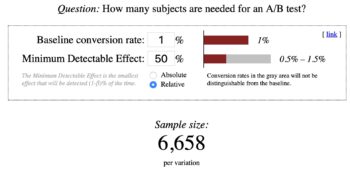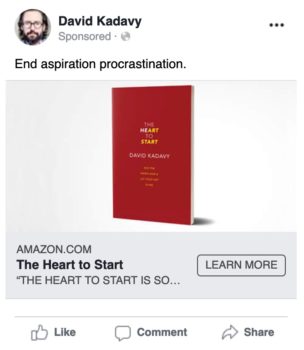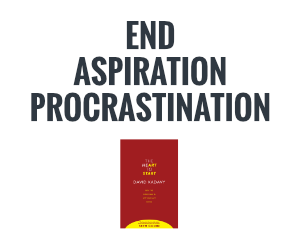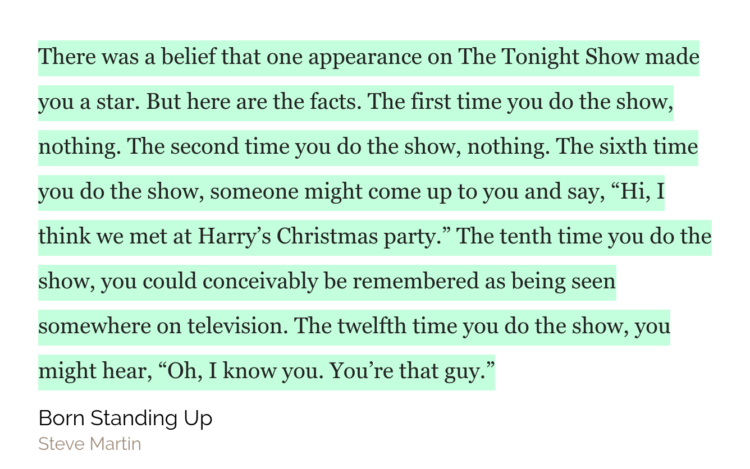Subscribe to blog updates via email »
January 2019 Income Report
January’s revenues were $6,774.97, up from December’s $6,187.11. Profits were $1,636.14, up from December’s -$773.45.
This report is a bit later than usual. It’s the last week of February, after all! Perhaps I’m continuing to question the value of doing these reports. I definitely get insights writing them, but at what cost? Additionally, I made a trip to San Francisco. More on that in a bit.
I’ve been getting back into a rhythm. Yes, the holidays got me out of my rhythm, but not as much as all of my visa woes did. It’s amazing the difference between having to repeatedly figure out how to keep your body legally where it is, and not having to do so.

WANT TO WRITE A BOOK?
Download your FREE copy of How to Write a Book »
(for a limited time)
I’m back in Colombia and back into some of my regular routines, though I’m still figuring out what new routines there will be this year.
I still have until July to be here on a tourist stamp, and I’ll soon be making arrangements for another visa attempt in May.
As I mentioned in December’s report, while I tried to load as many of my expenses as possible in the end of the year, I did forget to ask WP Engine to manually bill me in December. As such, I paid for an entire year of WP Engine in January, to the tune of $1,174.00, which distorts my expenses for the month.
Since I often go over my allotted 100,000 page views on my plan, I will often get small bills throughout the year for my overage – about $1 per 1,000 views. I guess this would be another good reason to kill off the online dating advice blog that once brought me enough passive revenue to free me up to launch my career as an author.
Amazon Lockscreen ads causing ballooning ad spend
I spent more than $3,300 on ads in January. Along with December’s $3,400 ad spend, and other year-end expenses, the credit card balance is making me sweat a little. Though I have the cash to cover it, I have been thinking about whether I can do better with my ad spend.
One thing I did in January was release my income report for my first year of The Heart to Start. Spending that much time and mental energy looking over the finances of that first year helped me realize that I could be more disciplined with ads.
Amazon’s Lockscreen Ads are not Product Display ads
The main reason my ad spend was so high in January was Amazon’s new Lockscreen Ads. These ads show up on the lockscreen of devices such as Kindle Fire tablets. I thought they were essentially the same thing as Product Display ads – which were discontinued with the introduction of Lockscreen Ads, and which also showed up on Kindle lockscreens – but I eventually learned otherwise. I noticed I was getting much cheaper clicks, but overall I wasn’t making a bigger profit.
I had been setting inflated budgets under the advice of Brian Meeks’s Mastering Amazon Ads. This was a mechanism by which to stimulate the ads to run, but in the past no campaigns ever came close to meeting my typical budget of $1,200. But one day, these Lockscreen Ads started going bonkers. My overall ad spend went from being about $30 a day, to spending $100–$200 for a several days in a row.
So, I was spending a bunch of money, I was getting a ton of clicks, and those clicks were much cheaper than they had been in the past. But I wasn’t making a bigger profit. It seemed something was up.
Through some looking around in Facebook Groups, I gleaned that the “clicks” on these ads actually go to an intermediate page of some sort. (I still haven’t seen what this page looks like.) I also learned that the number that indicates how many people actually visited your book’s page is the “Detail Page Views” number, which – sneakily – aren’t viewable in the dashboard.

You might think your Amazon Lockscreen Ads clicks are cheap. But the Detail Page Views (DPV) number is what really counts.
If those things changed with Lockscreen ads, likely many other things changed. Maybe the reporting is more accurate – or less accurate – than the reporting was for Product Display ads. Brian Meeks mentioned in his Facebook Group that he was turning off all ads for thirty days so he could get baseline numbers with which to reliably test Lockscreen Ads. I decided to follow suit.
I generally trust the reporting on Sponsored Product ads – wherein you generally bid on keywords – so I kept those running, but I also turned off all Lockscreen Ads. However not all reporting had come in, and an additional $175 or so was spent over the subsequent days before all Lockscreen Ad spend died off.
Once the spend died off, so too did the book sales.
I’ve noticed before that the more your book is selling, the more your book sells. Since my book wasn’t selling from Lockscreen ads, it appears that also affected the conversion rate of my Sponsored Product ads.

When my Lockscreen Ads stopped, the conversion rate on my Sponsored Product ads (shown) dropped, too.
I even had some days where I didn’t sell a single copy of The Heart to Start. However, my ROI shot through the roof. In my one-year report, I reported a 36% ROI on ad spend across all books. Over the past couple of weeks, I’ve had about a 200% ROI. I’ll know more when I put together my February income report.
I’m not optimizing for the highest-possible ROI. I don’t mind spending money on ads, and I enjoy the points from my 3x points credit card. I’m also not optimizing for profit. Ultimately, I’m looking for some combination of a decent ROI, optimal profit, and a healthy number of book sales. I still need to experiment to find that sweet spot.
What I am learning is that the automation I set up for Sponsored Product ads seems to be working well. But I still have a lot of experimenting to do when it comes to Lockscreen Ads.
Optimizing the subtitle and cover of The Heart to Start
One useful thing I got from releasing a one year income report of The Heart to Start (expanded version currently free on Kindle) is feedback. The article gained some attention both on Hacker News and on the Self-Publish sub-Reddit.
More than one commenter said that the subtitle of The Heart to Start – “Win the Inner War and Let Your Art Shine” – was confusing. Chris Fox – who makes a healthy self-publishing income – also chimed in and said he didn’t think the cover was helping, and that I should test.
I don’t think testing alone can take me to the perfect subtitle or cover, but I could certainly do more testing than I did when I first launched HTS, which was precisely zero testing. According to Mr. Fox:
Given your reviews you’ve written the top book in your space, but your cover isn’t doing you any favors and is part of the reason why your conversion is so low. If you changed that one element I bet your profit from ad spend would sky rocket. —Chris Fox
From the reviews of HTS, it’s clear readers love the book. But is the book doing everything it can to sell itself?
The book has “validated.” It’s clearly good enough to merit some attention. And by testing, I can maybe come up with a methodology I can use to improve the sales of future books.
I can change the subtitle, cover, and description of HTS without changing the ISBN – and thus without losing all of those wonderful reviews. Changing the title entirely would probably be another story.
Mining Amazon reviews for subtitle phrases
I had previously printed out all of the reviews of HTS, and took them to a cafe for reading. I then started highlighting and underlining various phrases in those reviews. I was looking for comments within these categories:
- Disease (what’s it like to have the problem this book helps with?)
- Symptoms (what are the symptoms of the “disease”)
- Treatment (what elements of this book treat the “disease?”)
- Cure (what does it feel like to be cured of this “disease?”)
I reviewed these highlights, and began to identify short phrases that I could test. I then tried to find a reliable way to test them.
Searching for a subtitle-testing methodology
I needed a way to reach statistical significance in my testing. I’ve written in the past about misled by faulty testing methodologies, so I wanted to be disciplined in my testing.
I figured that I could expect a 1% baseline conversion rate for clicks on test ads. If one option is going to be a lot better than another, I figured I could expect a 50% increase in clicks generated. Evan Miller’s sample size calculator told me I’d need a sample size of 6,658 to achieve significance.

At a 1% baseline conversion rate, I’d need a sample size of 6,658 per variation to detect a 50% lift.
I wanted to run tests that hit that sample size, and I wanted to avoid continuously entering my numbers into a Chi Squared Test, and stopping the test as soon as I had significance. Apparently that leads to unreliable results.
Subtitle testing on Facebook
I tried running some of these phrases as options in Facebook’s “Dynamic Creative” ads to a lookalike audience, based upon email list subscribers. I didn’t trust the results. Facebook chooses a winner too fast, and ultimately Facebook is incentivized to make money on your ad, not necessarily to bring you results.
I needed a way to get impressions, to a relevant audience, and I didn’t want an ad system to bias my results.
I would try running CPM ads on Facebook. This time, I’d put each creative in its own ad set, as recommended by ConversionXL, so Facebook wouldn’t try to pick a winner.
At some point I realized that a 1% baseline conversion rate would be unlikely for clicks on a CPM-optimized ad. Also, getting so many impressions would be expensive. I tried calculating a sample size again. This time, I found that at a .5% baseline conversion rate, I could detect a lift of 100% with only 3,556 impressions. That’s a huge lift, but I figure if I’m going to pick a winner, it had better be way better.
Then, I ran the test. It was inconclusive.
Subtitle testing on BookBub
Finally, I tried creating very simple creatives for BookBub Ads. I included a small cover of HTS, with various phrases in very large type. I ran the ads to a collection of related authors.
I liked that these ads were running to a book-minded audience in a context in which they think about books. I was weary about the idea of advertising to people on Facebook, when their minds are far away from books.
I’m still sorting through all of the findings, and doing more testing. I hope to share more as I know more.
Because of this testing, the advertising vs. book sales numbers will likely be a bit skewed in February. The Amazon ads probably look more profitable than they are, and overall ads are going to look less profitable than if I had been running BookBub and Facebook ads with the intention of making an immediate profit, rather than for testing.
After arriving at a good subtitle, I’ll also be testing covers, and perhaps even descriptions. I’m also holding off on applying for a BookBub featured deal again, until I’ve finished with optimization. I’m trying to come up with creative ways to test all of these options, and I’ll share what I learn along the way, so stay tuned.
Will this testing be worth it?
It will be interesting to see what kind of impact optimizing a subtitle, cover, and description really has. I’m always inclined to find better ways to use my time than to work my butt off trying to increase the conversion rate of something by 10%, but I could see how doing so could have a compounding effect in this case.
Based upon my observations while running ads for HTS, I’ve seen that the more your book is selling organically, the more your ads run. So if your book is getting clicked on 10% more than usual, and people viewing your book’s page are buying at a rate of 10% more, you’re likely to experience even more lift than the 21% lift compounding those two factors would bring.
You would also trigger Amazon’s algorithms to promote your book more. Big marketplaces like Amazon can be a bit winner-take-all. It’s kind of like how the top spot on Google brings you something like 70% of all clicks (I’m making that number up). For all I know, the difference between being in the top spot and the next spot may be accounted for by your book generating sales at a rate of 1% more than the next book.
I’ve been thinking a lot about forecasting lately, and I’m not sure how I would calculate such a compounded effect for forecasting. I need to hop into Google Sheets and run some numbers.
With each thing I do, I’m always thinking about how I could use that same effort in some other place. I’m asking myself if I’d be better off writing another book, rather than optimizing a subtitle and cover. I’m curious to see if this compounding effect takes place, but even if it doesn’t, as I said, I also figure that I’m building a skill that will make my future books even better-positioned for the market.
San Francisco Trip
As I draft this report, I’m on a plane back from San Francisco. I flew there just to be on a very big podcast – The Jordan Harbinger Show. I’m told the episode should go live sometime toward the end of March.
I was just interviewed for @JordanHarbinger’s podcast. Really excited for this one to debut. I think you’ll love it. Subscribe to his show so you hear it first. pic.twitter.com/myiYfmD39X
— ? David Kadavy | Time ?? Mind Management (@kadavy) February 16, 2019
I was reluctant to travel so far just for a podcast interview, but fortunately my air travel was just about free, thanks to my 3x points credit card. As I said when I first got it, I planned to use the points to do some travel that would help me grow my business.
I’ve been on a number of leading podcasts around creativity since the launch of HTS, including The Portfolio Life, The Creative Penn, The Unmistakable Creative, and The Accidental Creative, and I’ve been surprised to see only modest impact on book sales, and no growth in podcast downloads to speak of.
However, according to my estimates, The Jordan Harbinger Show is bigger than all four of these shows combined, and then some. Their sponsorship page currently promises advertisers at least 242,000 downloads, which is nearly one-hundred times the size of my own show, Love Your Work.
Forecasting podcast appearance impact
Since I’m thinking about forecasting, here are my forecasts for the impact of this appearance.
Book sales: Within 1 week of the episode debut, I forecast – by percent chance of falling within each range – that I will sell more than the usual number of copies of HTS by this much:
0–50 books: 3%
51–100 books: 20%
101–250 books: 50%
251–500 books: 20%
501–1,000 books: 5%
1,000+ books: 2%
Podcast downloads: 1 month from the episode debut, I forecast that the average number of downloads per episode will have increased by:
(negative): 10%
0–200: 60%
201–500: 23%
501–1,000: 5%
1,000–5,000: 1%
5,000+: >1%
As you can see I’m somewhat optimistic about the impact it will have on book sales. I do have some data from talking to at least one former guest of Jordan’s former podcast. I’m not terribly optimistic about the impact it will have on podcast downloads. After at least two years of flatline growth, I’m generally pessimistic about the prospects of growing podcast downloads.
I put an incredible amount of preparation into pitching, and preparing for, this appearance. It has been one of my main projects since June. Along the way, I’ve told myself that even if it doesn’t reap an immediate profit, I can take the skills I’ve built – in making it happen – far into the future. Kind of like what I tell myself about optimizing my book.
Even if there’s little or no impact, I still must keep in mind the quote I recently shared with my email list, from comedian Steve Martin’s biography.
Things take time. Sometimes what seems like your “big break” isn’t that at all, but rather another step on a long road. This is what I tell myself when I think back to all of the podcast appearances, the advertising, and the appearance on the front page of Apple Podcasts, none of which made a noticeable lasting impact on downloads.
The catch is of course that a person could be completely delusional their entire life, reassuring themself with this notion that “things take time.”
So, for what reason does a person keep pressing on? You have to find that within yourself.
Interviewed Andrew Warner of Mixergy
While in San Francisco, I made sure to take advantage of the opportunity to interview guests. Surprisingly, I couldn’t think of many people in SF whom I wanted to interview. But the clear choice was Andrew Warner, whose Mixergy podcast was one of the early podcasts that inspired my own. Andrew’s episode goes live in March, so be sure you’re subscribed. It will be an instant classic.
It was awesome to interview @AndrewWarner, the godfather of entrepreneur-interview podcasts. Raw conversation already available for Patreon supporters. pic.twitter.com/u7dPnvrAzt
— ? David Kadavy | Time ?? Mind Management (@kadavy) February 15, 2019
I also held a small, “introvert-friendly” meetup. I’ve held larger meetups in the past, but this one I purposefully kept small by charging a donation and keeping the location a secret. I really enjoyed meeting and chatting with the readers, listeners, and friends who came.
https://www.instagram.com/p/BuDK3XvHdja/
Surprise money from Amazon.de
You know that feeling when you find $350 in your pocket? I got that the other day when I logged into my affiliate account for Amazon Germany. I had been referring sales for years, and since I didn’t have a payment method set up, I hadn’t gotten paid. I had a balance of €312, so I promptly set up ACH to receive the payment. So, Amazon affiliate income is a little higher than usual in this report.
ActiveCampaign Review live
My front-burner project over the past several weeks was my brand new ActiveCampaign review. I put together a roughly 5,000-word blog post, and a twenty-five minute YouTube video. I built upon what I learned creating similar ActiveCampaign vs. ConvertKit comparisons, and an AWeber Review.
There are many products I’d love to make reviews for, but out of all of my affiliate partners, the ActiveCampaign program is the best reward for your effort. I earn a 30% commission for the lifetime of each account I refer. As you can see in these reports, that’s currently bringing in about $1,000 a month of passive revenue, which is very welcome, since I’ve allowed my other passive revenue properties to dwindle while building my author career.
Making reviews like these is a nice way to add some passive revenue padding. And, I get to learn more about email marketing platforms, which I’m using anyway.
Income
Book Sales
| The Heart to Start Kindle | $2,620.87 |
| The Heart to Start Paperback (Amazon) | $367.60 |
| The Heart to Start “Wide” (non-Amazon) | $84.34 |
| The Heart to Start Audiobook | $123.52 |
| How to Write a Book Kindle | $305.65 |
| How to Write a Book Paperback | $367.60 |
| How to Write a Book Audible | $29.65 |
| How to Write a Book Spanish Kindle | $7.84 |
| How to Write a Book Spanish Paperback | $0.72 |
| Make Money Writing on the STEEM Blockchain Kindle | $16.02 |
| Make Money Writing on the STEEM Blockchain Paperback | $0.00 |
| Make Money Writing on the STEEM Blockchain Audible | $1.68 |
| Total Book Sales | $3,925.48 |
Digital Products
| Summer of Design | $12.00 |
| D4H Video | $256.00 |
| White Hot Course | $630.00 |
| Total Digital Products | $898.00 |
Affiliates / Advertising
| Active Campaign | $936.50 |
| Amazon | $456.65 |
| ConvertKit | $26.10 |
| Google Adsense | $27.07 |
| Match.com free trial | $74.97 |
| SendOwl | $3.00 |
| Total Affiliates | $1,524.29 |
Love Your Work Podcast
| Patreon | $401.03 |
| Total LYW Podcast | $401.03 |
Writing
| Medium | $26.17 |
| Total Writing | $26.17 |
| GROSS INCOME | $6,774.97 |
Expenses
General
| Accounting | $220.00 |
| Coworking Space | $70.61 |
| Outside Contractors | $29.99 |
| Podcast Editing / Publishing | $240.00 |
| Misc. Software | $9.59 |
| Total General | $570.19 |
Advertising
| Amazon | $3,200.27 |
| BookBub | $13.13 |
| $8.09 | |
| Prestozon | $80.00 |
| Total Advertising | $3,301.49 |
Hosting
| Bookfunnel | $15.00 |
| Evernote | $34.99 |
| Genius Link | $10.00 |
| Libsyn | $20.00 |
| Namecheap | $13.16 |
| WP Engine | $1,174.00 |
| Total Hosting | $1,267.15 |
| TOTAL EXPENSES | $5,138.83 |
| NET PROFIT | $1,636.14 |









